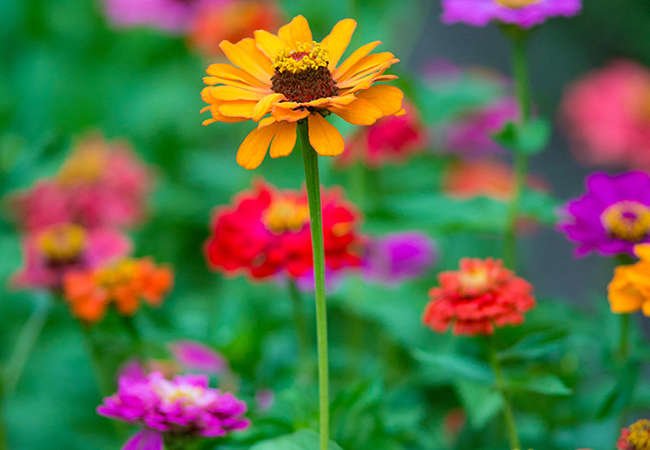

We may earn revenue from the products available on this page and participate in affiliate programs. Learn More ›
Home Advice You Can Trust
Tips, tricks & ideas for a better home and yard, delivered to your inbox daily.
By signing up you agree to our Terms of Service and Privacy Policy.
Growing Easy
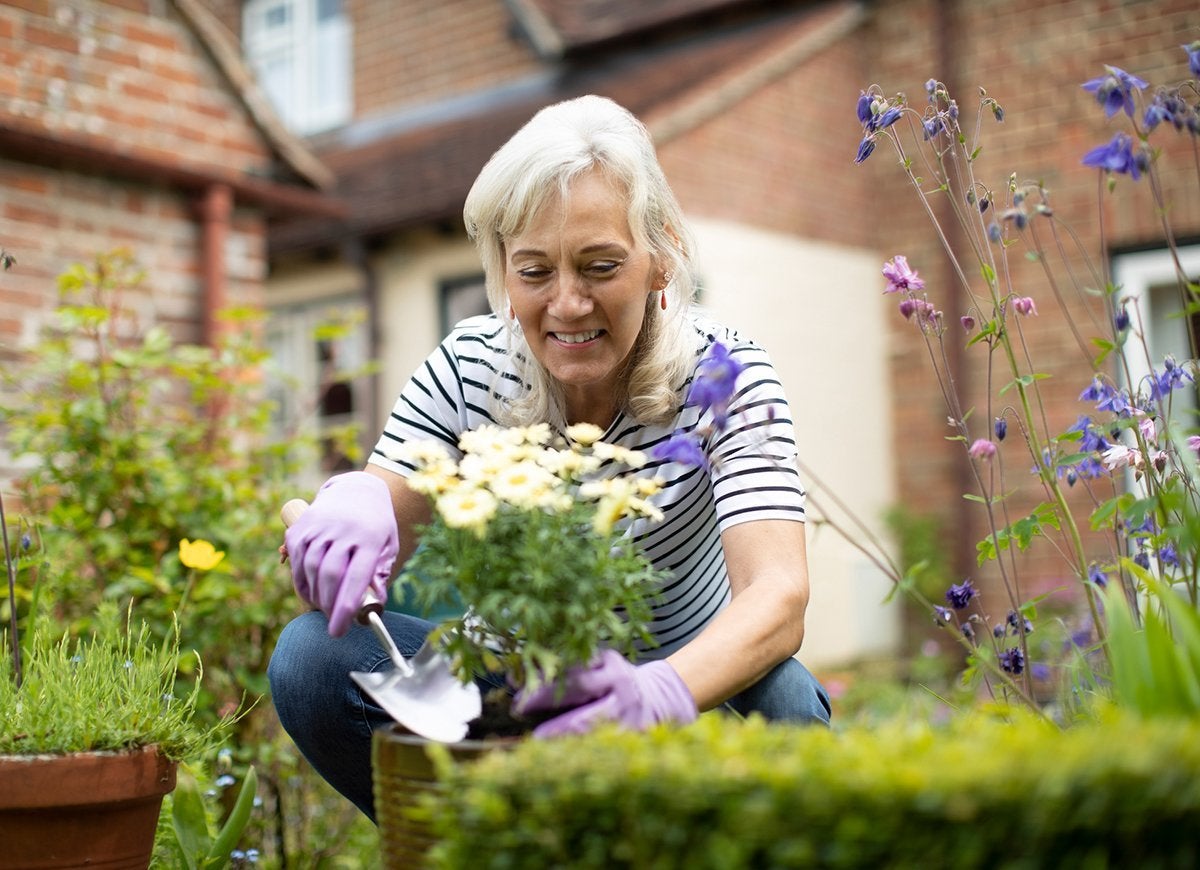
It’s tempting to throw in the trowel when you kill your very first plant. Most novice gardeners, however, don’t realize that killing the occasional plant is all part of the process. That said, choosing the right plant for your space—and your skill level—will put you in a position to become the best gardener you can be. We’ve compiled a list of plants, including options for all kinds of growing situations—full sun, full shade, and containers, that are beginner-friendly and sure to give you the encouragement you need to keep on growing.
Sedum
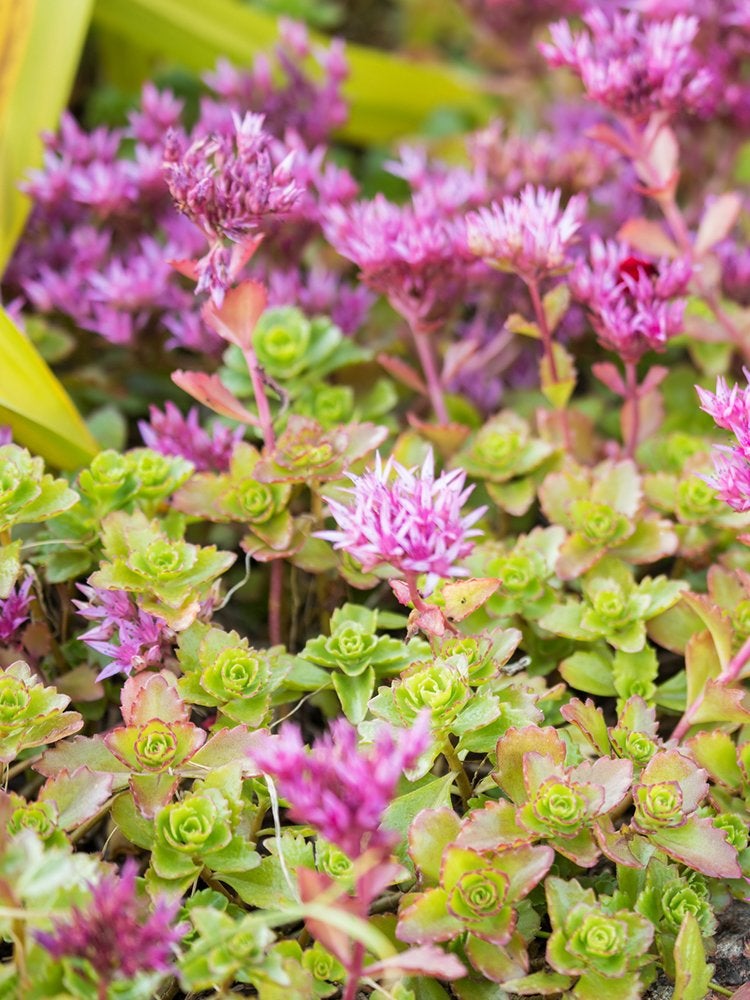
Available in a variety of heights and growth habits, sedum is perfect for that hot, full-sun spot in the garden. As a succulent, it doesn’t require much supplemental hydration because its thick leaves store water, making it incredibly drought-tolerant. In fact, too much water may actually kill it. Sedum thrives in most soils, even dense clay and those with few nutrients. While the rest of the landscape may benefit from fertilizer, avoid feeding sedum; fertilizer can make them too leggy and less inclined to produce their flowers, which pollinators love. Most sedums are hardy in Zones 3 through 10.
Hosta
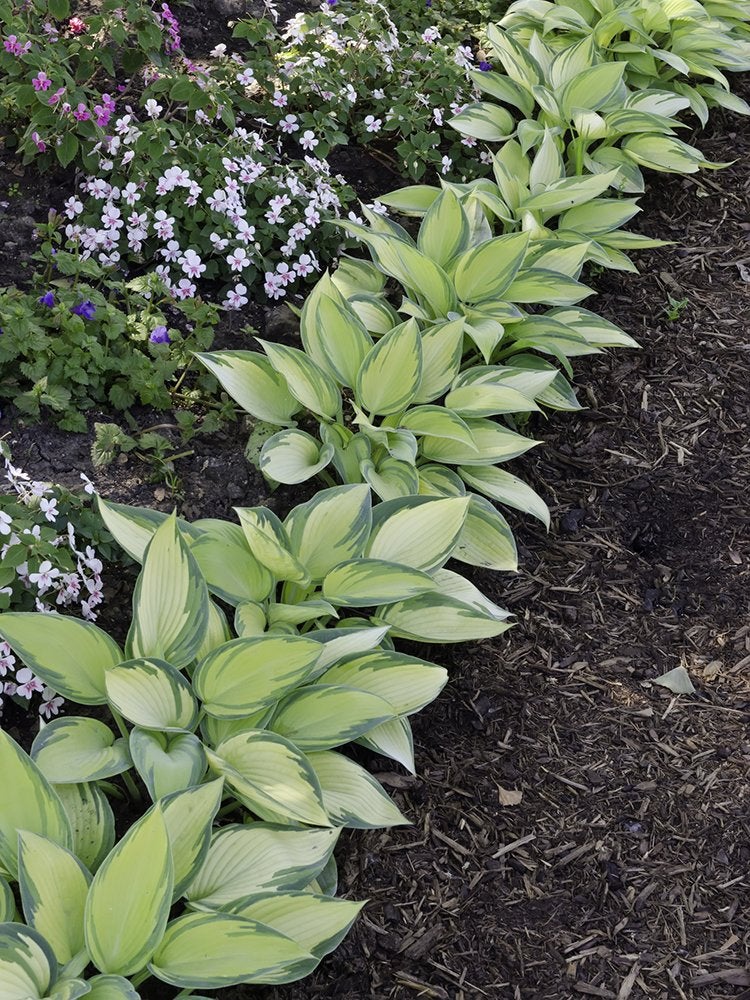
The quintessential shade plant, hosta is the perfect low-maintenance perennial. Some varieties sport enormous leaves with interesting variegation that adds a tropical flair to the landscape. Also consider them for containers in shadier spots on a patio or balcony. There’s a hosta for every situation. Some form clumps five inches wide, while others spread to a massive five feet. These nearly no-care plants are hardy in Zones 3 through 9.
Supertunia
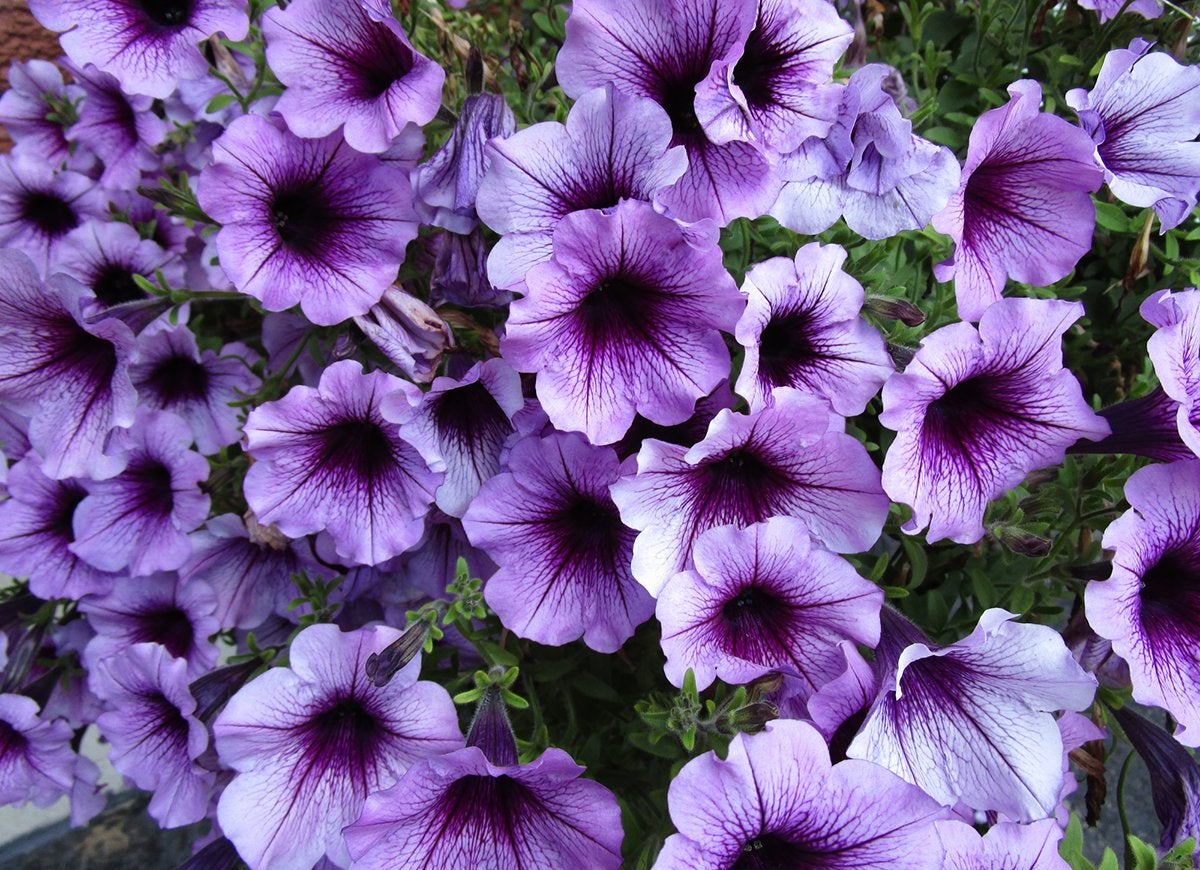
Available in more than 40 colors to suit any palette, Supertunias are great annuals for containers and garden borders in full sun. There are several sizes and growth habits, including a trailing variety perfect for spilling over the sides of pots, hanging baskets, and window boxes. While most petunias require deadheading (the removal of dead or spent blooms to trigger rebloom), Supertunias flower profusely without your having to perform this chore.
Coleus
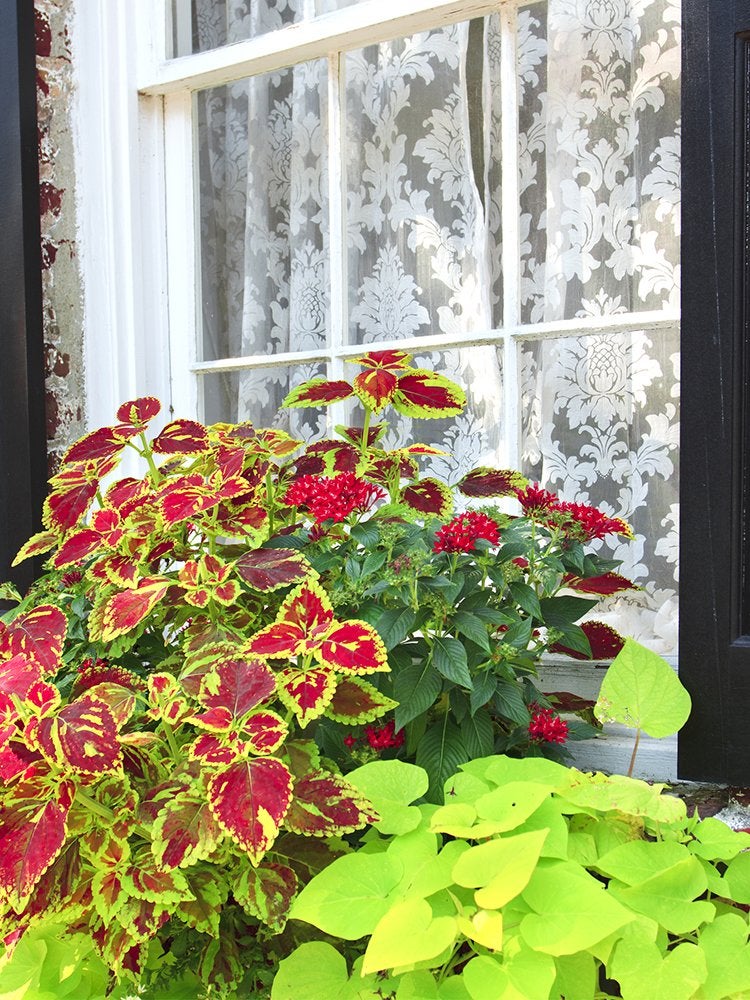
With foliage like this, who needs flowers? There are so many color and pattern variations—from smoldering orange to velvet-like black, and everything in between—that you’ll undoubtedly find one in your favorite color. Coleus is just as happy in a container as it is in the landscape. Though coleus is often considered a shade plant, the best coloring occurs when it’s exposed to morning sun and afternoon shade, although with enough water, it can even withstand some afternoon sun. For a bushier plant, pinch off the top growth to encourage branching.
Russian Sage
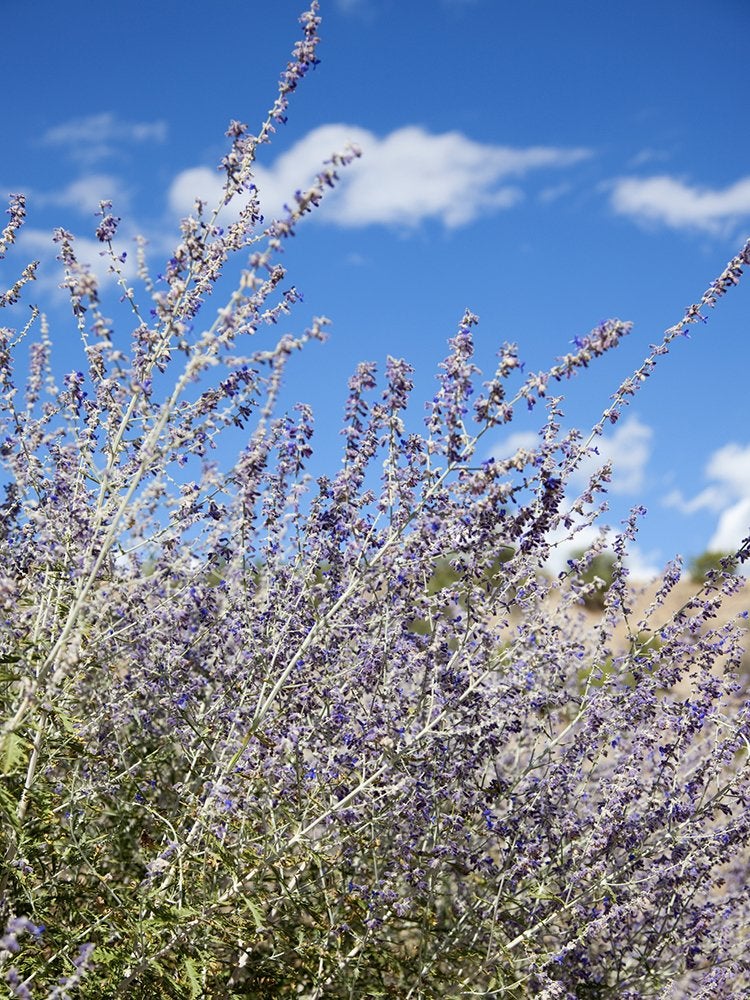
Looks are deceiving: This elegant plant is anything but delicate. Russian sage is a drought-tolerant pollinator magnet and a must-have in any low-maintenance, full-sun garden. Tall wands of purple flowers float above silvered foliage. Taller varieties can reach four feet and are ideal for the back of a garden border, while newer varieties are shorter but retain all the characteristics of the full-size plant. Hardy in Zones 5 through 9.
Catmint
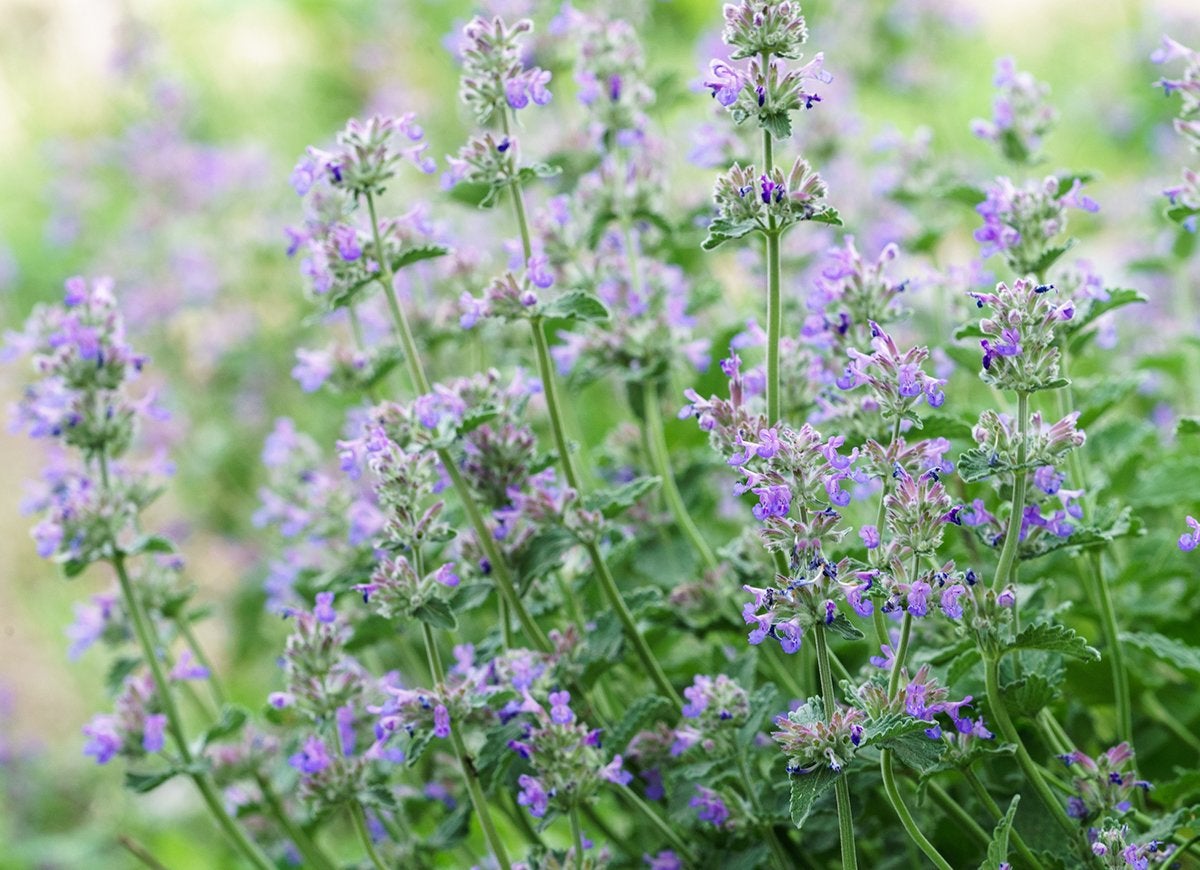
If you have a lot of sun, catmint will be right at home. Mounds of silvered green foliage emerge in early spring, followed by an explosion of purple flowers that last into summer. As they fade, you can remove the flowers to encourage rebloom. This easy-to-grow plant is a pollinator hot spot that will thrive in most soil types and is available in several sizes to suit any growing situation. Hardy in Zones 3 through 9.
Variegated Solomon's Seal
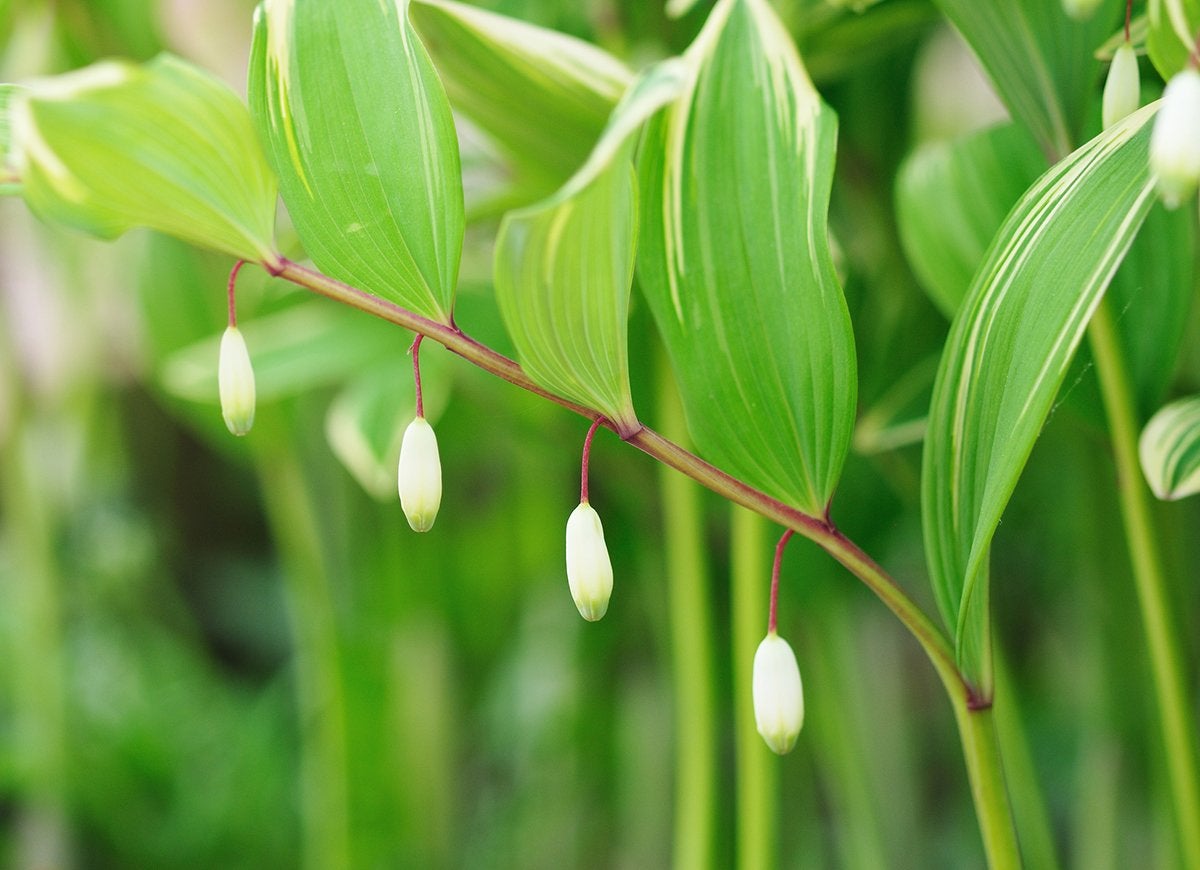
If a plant can be considered unassumingly elegant, Solomon’s seal fits the bill. A woodland plant best suited to damp, shaded locations, Solomon’s seal has gracefully arching stems, variegated foliage that turns a lovely golden color in the fall, and dangling white flowers that turn into black seedpods. The flowers are a bumblebee favorite, and the plant spreads politely by underground rhizomes to form colonies, turning your garden into a little shade plant haven. Hardy in Zones 3 through 9.
Ornamental Onion (Allium)
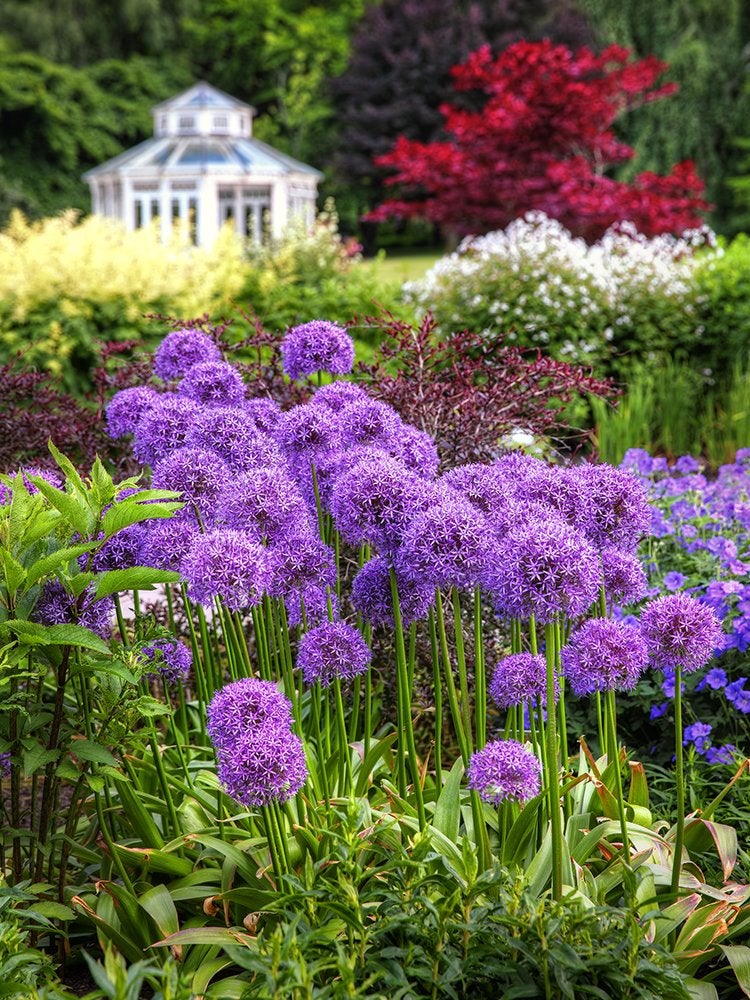
If you have deer and rabbit problems, alliums are the perfect low-maintenance solution. The critters won’t touch them. Plant spring-blooming allium bulbs like Globemaster in the fall for enormous softball-size purple flower clusters. For summer flowers, consider planting Millenium or Summer Beauty allium plants at the front of a border for their purple lollipop-like flowers. Hardy in Zones 4 through 8.
Geranium
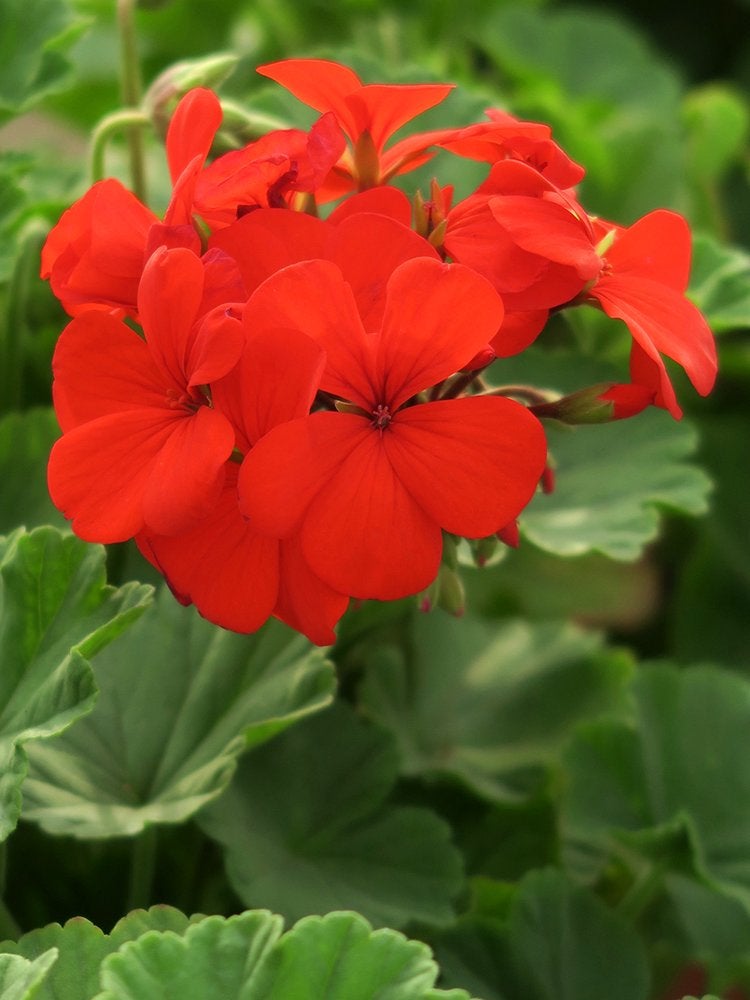
Give them good drainage, a beautiful container, and a sunny situation, and you’ll have color popping all summer long on your patio or deck. Pinch off the dead flower stalks to keep the flower show coming. All that flowering requires a balanced fertilizer that’s best applied in spring and summer. Check the product label for more specific information.
Nasturtium
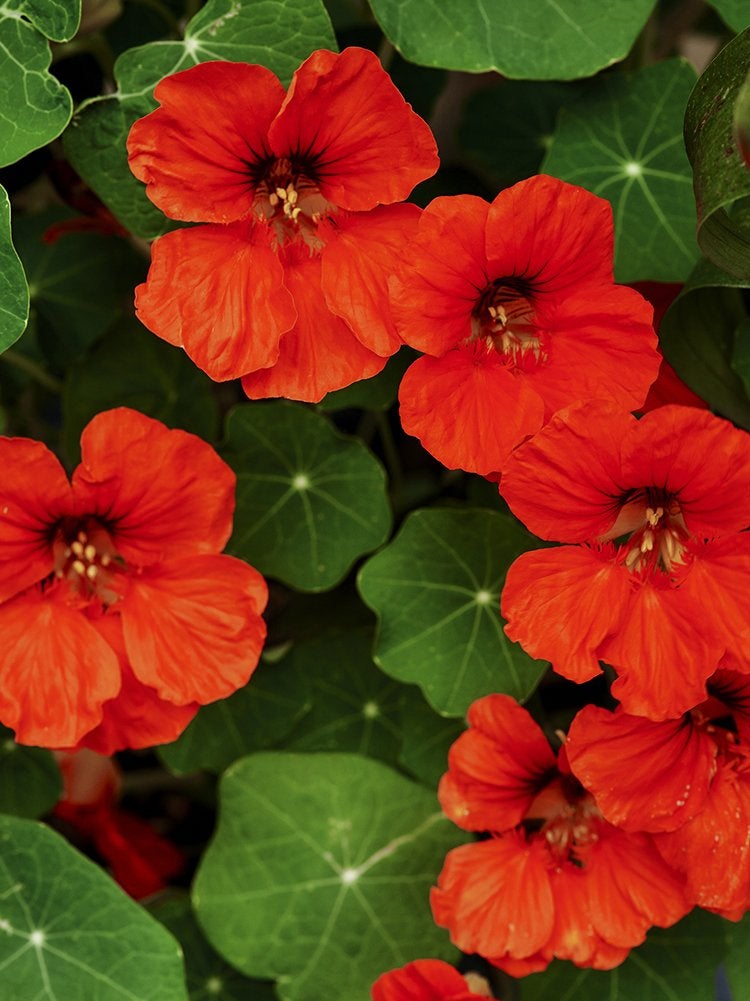
Dress up salads and your garden with these peppery-tasting blooms. These edible plants flower best in full sun and come in shades of yellow, orange, white, pink, and red. Available in mounding and trailing varieties, they’re perfect for edging a flower bed or spilling over the side of a container. Sow them directly into the garden or start them early indoors for transplanting after the chance of frost has passed.
Coneflower
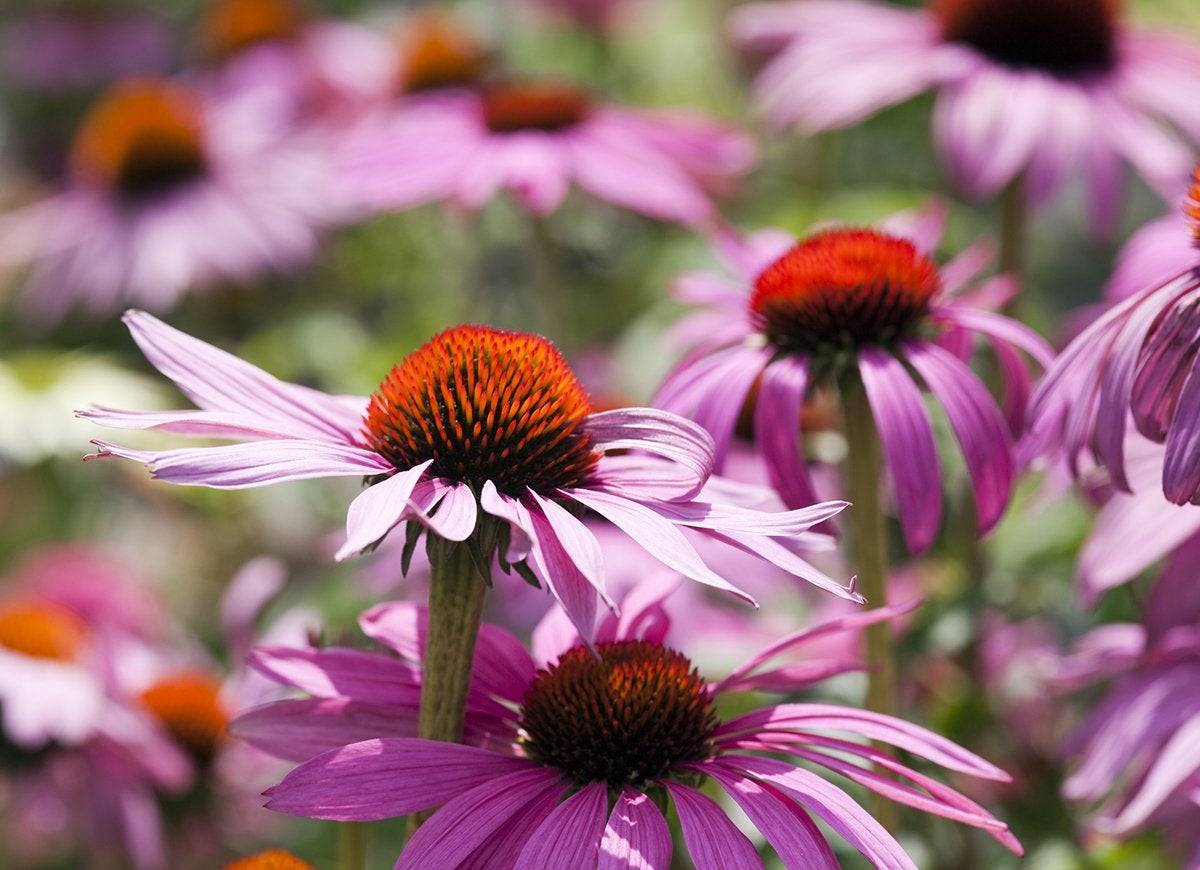
Clay soil is no match for coneflowers. One of several plants known as “clay busters,” coneflowers thrive in heavy soil, sending up stalk after stalk of daisy-like flowers that are pollinator beacons. Plant them in full sun and let Mother Nature take it from there. Just be sure to offer a drink to get new plants established, especially during drought conditions. Hardy in Zones 3 through 9.
Daylily
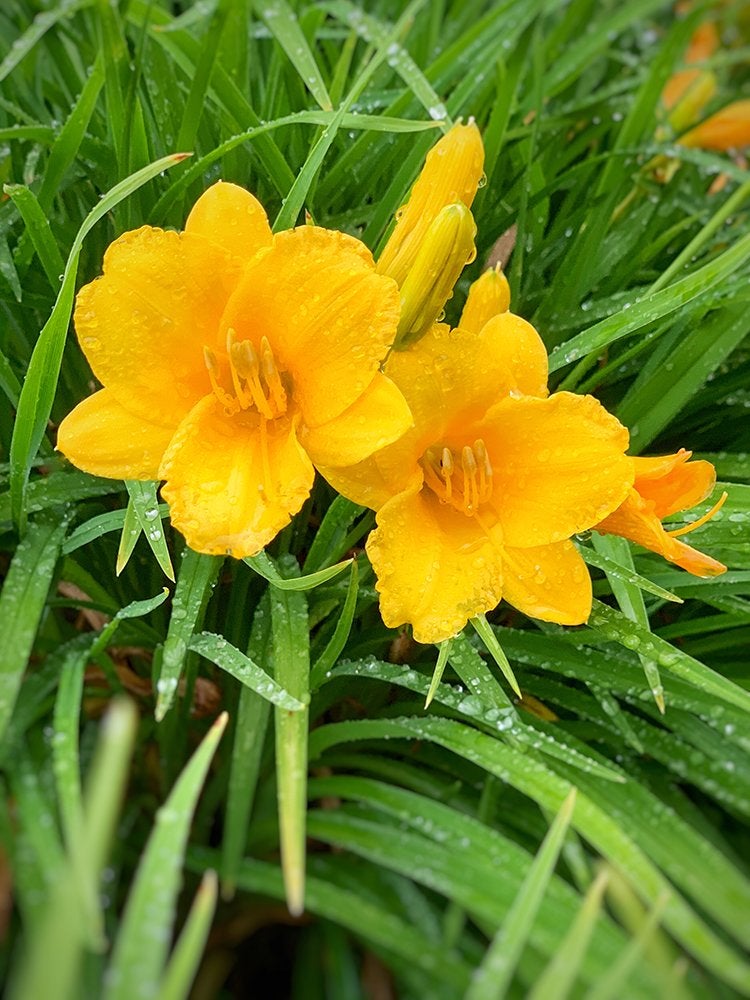
One of the most undemanding plants in the garden, daylilies grow quickly, forming clumps of grass-like foliage with bright flowers. Although each bloom remains open for only a day, each plant puts forth hundreds of flowers, so impermanence is hardly an issue. Another clay buster, daylilies thrive in full sun and come in interesting flower colors, shapes, and sizes. Daylilies’ bloom time depends on their variety. Plants are labeled early, early to midseason, midseason, or late to indicate when they come into flower. Prolong the bloom period by removing spent flowers and keeping plants well watered. After a couple of years, if the greenery is flourishing but flowers are few and far between, divide the plants to restore them to their colorful glory.
Cosmos
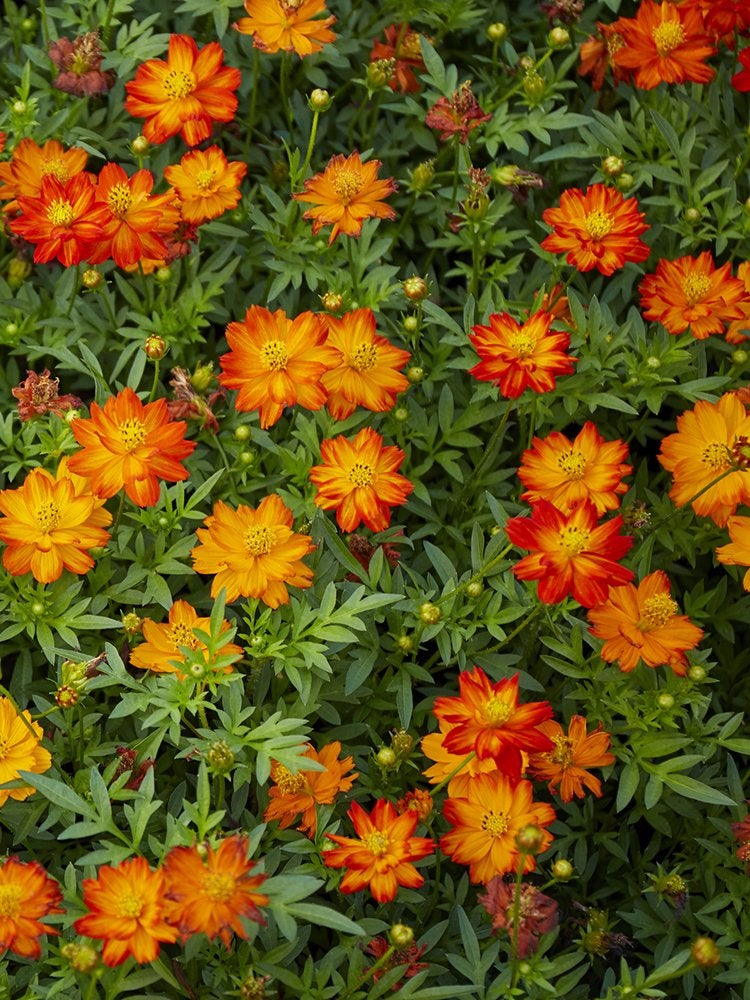
If you have an open dry spot in the landscape with full sun, toss in a few cosmos seeds and watch them take off. Their fast germination rate means you and the pollinators will have flowers to enjoy sooner rather than later. Available in a variety of heights as well as petal shapes and colors, cosmos seem to float effortlessly in the landscape while demanding very little from the gardener.
Sunflower
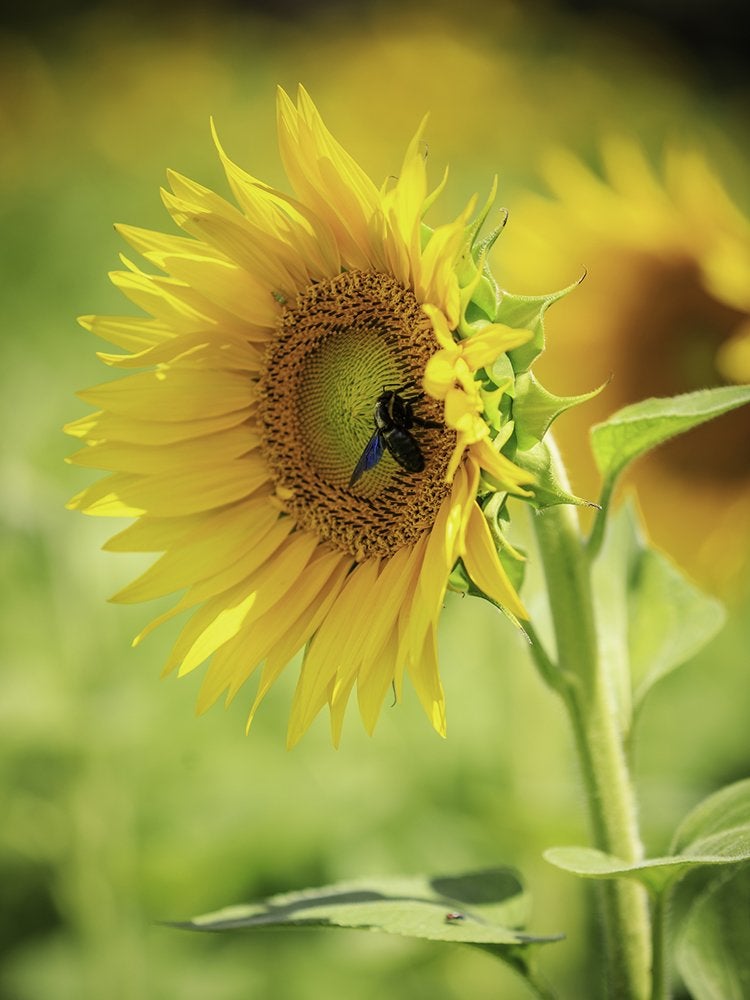
From gigantic bloom-topped stems that tower overhead to diminutive ones with names like Teddy Bear, sunflowers are splashy successes for beginners—and the pollinators will love them too! What’s more, you can grow them from seed in the landscape or as a “thriller” in a container design, as long as there’s full sun. Sunflowers offer a lot of bang for your buck, costing only a dollar or two for a packet of seeds.
Zinnia
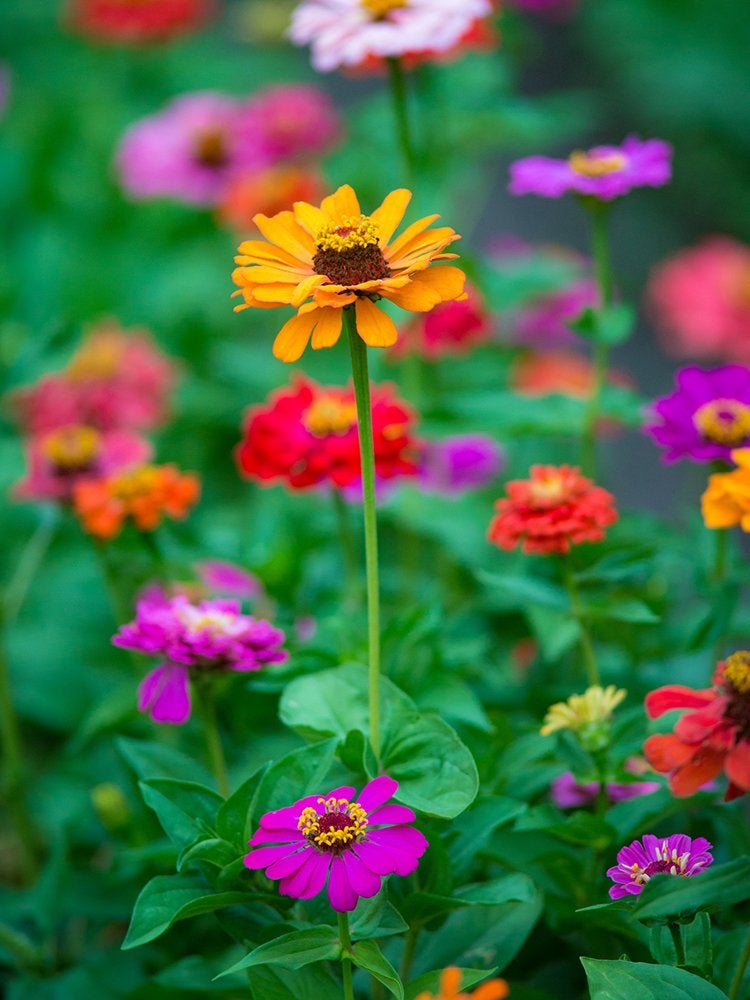
They may be old-fashioned, but there’s nothing out of style about zinnias. One of the toughest annuals, zinnias also produce some of the most beautiful flowers. Available in painterly colors in unique shapes and sizes, there’s even a cactus variety with quilled petals. Buy them by the flat or save your pennies by direct sowing seeds into garden beds and containers. They grow fast and flower nonstop, and bees and butterflies love them.

Our Best Advice for Beginner Gardeners
We’ll help you set up your first garden—whether that’s a few pots on your patio, a raised bed, or an in-ground plot out back—and select the right plants for your soil and region.
